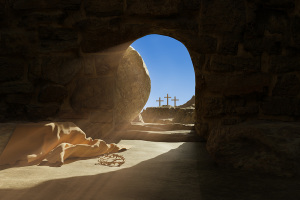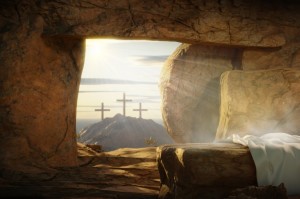What does it mean for Jesus to be the 'light of the world'?

Our world today has a confused understanding of who Jesus is as various peoples and groups vainly try to mold our Savior into the person they want Him to be. Even within the Church, the person and the work of Christ is unclear to many people. We need constant reminders from God’s Word of who Jesus is so we can keep our eyes fixed on the Messiah and grow in our trust and love for Him.
The world’s ambiguity in this area is why Jesus’ self-descriptions in John are so important for believers’ lives. In the Gospel of John, Jesus made seven statements beginning with the phrase, “I am the …” and went on to describe something about who He is and why He came into the world. The second of these statements is found in John 8:12, where Jesus declares that He is the Light of the world, and that those who follow Him will no longer walk in darkness.
The theme of light traces its origin back to the beginning of John’s Gospel, where the apostle informs his readers in the first chapter that Jesus inherently has life within Himself, and that He is the giver of life. Jesus’ life is the light of men, bringing illumination and truth to humanity. Additionally, John sets up a duality between light and darkness at the outset of his Gospel. Jesus is the light, but there is also darkness that is opposed to the Light. The Light of Christ shines amid this darkness, and the darkness is unable to understand it or extinguish it.
John’s introduction of these concepts set the stage for what is to follow, especially in terms of the conflict that will arise between light and darkness, between Jesus and the devil, and between those who are followers of Christ and those who are the children of the devil.
Not only does the theme of light flow out of the literary context of the Gospel of John, but it also fits the historical context as well. John 7:2 tells readers that these events all transpired around the Feast of Booths (or Tabernacles). Light was a significant part of the celebration. In the temple court, they would light four huge lamps to celebrate this Feast, and men would dance throughout the night with burning torches in their hands, singing songs of praise for God’s salvation of Israel from Egypt.
John 8:12 almost certainly takes place in the context of this feast, making Jesus’ pronouncement that He is the Light of the world that much more striking. The Jews, in response, ignore Jesus’ claim to be the Light of the world and instead try to execute Jesus for blasphemy. After this scene concludes, readers are left to wonder what Jesus meant when He called Himself the Light of the world, which is elucidated in John 9. John 9 is a validation and exposition of Jesus’ claim that He is the Light of the world — the story of our Lord bringing light to the darkened eyes of a blind man. Through this story, we see what Jesus meant by His claim that He is the Light of the world, and what is necessary for sinners to follow Him and have the light of life.
In John 9, readers encounter the account of the blind man who received his sight from the Savior of the world. It’s remarkable to note that this man did not object to Jesus’ rather complicated manner of healing him. Instead, he has implicit trust in Jesus’ words, leading to true obedience and subsequent reception of his sight. Jesus, the Light of the world, has enlightened this man’s eyes so that he no longer walks in darkness. This was undoubtedly the greatest moment of the man’s life so far, but things are about to take an unexpected and devastating turn.
Nothing could have prepared this man for the rejection he was about to experience from the unbelieving world. A moment that should have been a time of celebration turned into a time of heartbreak. This man is roundly rejected by the world — his neighbors, the Pharisees, his parents, and everyone in his community.
Despite the increasing escalation of rejection, the formerly blind man’s understanding of Christ grows — as does his faith. When the man first comes to faith, he is not sure about much, other than Jesus gave light to his blind eyes. However, as he has more time to contemplate the events that transpired and the thought of his commitment to Jesus, his view of Jesus is elevated. At the end of his discourse, the man makes a full confession that Jesus is from God. This man has never seen Jesus, and he has no idea where Jesus is or if he will ever see Jesus. He knows, though, that Jesus opened his eyes, gave him sight, loved him, and showed compassion to him. He firmly understands Jesus is the one sent from God because Jesus has done what only God can do.
Over the course of one day, this man went from being an outcast because he was blind physically to being an outcast because he could see spiritually. He is totally alone — condemned and disowned by everyone around him.
Right here, readers witness the most incredible part of the narrative as the Lord reveals himself to this man. Jesus finds His forsaken follower — His disowned disciple — and He comes to him in mercy and love. Psalm 27:10 says, “For my father and my mother have forsaken me, but the Lord will take me up.” Blind people were typically uneducated in Israel so this man might not have known this verse, but it expresses the heart of our Savior toward His people when they have been rejected by the world, including rejection by those closest to them.
After all the suffering, all the persecution, all the abandonment, all the rejection, this man sees Jesus and speaks to Him face to face. The man’s response is to worship His Lord, which is the response of every believer’s heart when we encounter the Risen Lord. The day is coming for us when, after we have suffered in this life, we will see Jesus’ face. On this day, we will joyfully confess that He is Lord, and we will bow down and worship Him in His visible presence.
The chapter closes with Jesus noting the great reversal of status that He came to bring. Jesus, as the Light of the world, descended to bring judgment, which in this context means that He came to expose reality. He came to give light to those who walk in darkness and to give sight to those who do not see. However, only those who recognize that they are blind can receive the light. Those who think they see will be exposed as those who are truly blind.
This darkness was the state of the Pharisees throughout John 9. If they would recognize their spiritual blindness and come to the Light of the world, they would be forgiven, but they refused to accept that they were blind. They thus stood condemned. The blind are made to see, and those who claim to see are truly blind.
Who is Jesus? He is the Light of the world. He came so that those who believe in Him will be rescued from darkness and be given eyes to see in His marvelous light. He came to give us light so that we might have eternal life through faith in His name.
Believers, like the blind man in John 9, go through many difficulties in this dark world that opposes the light of Christ. We, too, face rejection, hostility, persecution, and suffering. In the midst of these difficulties, though, we grow evermore in our knowledge of our Savior. We know that the end of it all, we will see the face of Jesus — the Light of the world.
Dr. Robb Brunansky is the Pastor-Teacher of Desert Hills Bible Church in Glendale, Arizona. Follow him on Twitter at @RobbBrunansky.




























